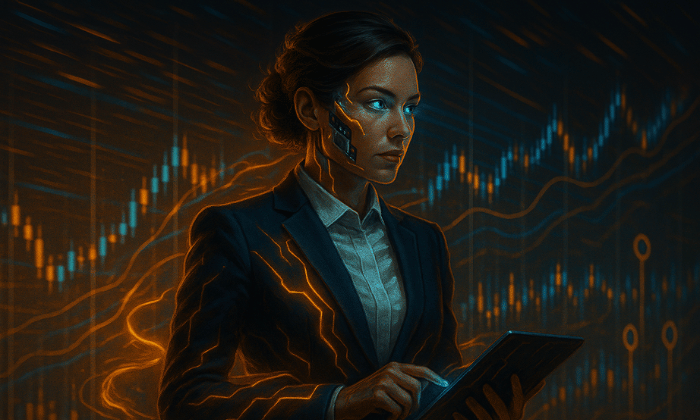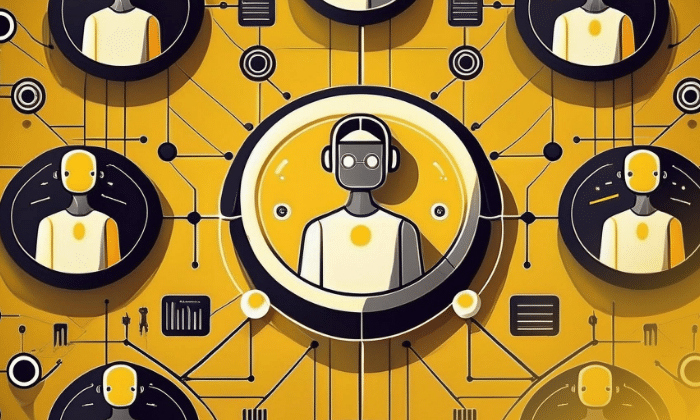Key Takeaways
- Agentic trading introduces AI systems that act with autonomy, requiring firms to rethink oversight, accountability, and ethical boundaries.
- Explainability is non-negotiable: Opaque AI models have no place in regulated capital markets environments.
- Human judgment remains critical, particularly in defining risk thresholds, interpreting context, and maintaining control in volatile conditions.
- Autonomy in AI should be phased and deliberate, with clear guardrails, rigorous backtesting, and hybrid decision models.
- Firms that strike the right balance between automation and human expertise will be better positioned to extract alpha while managing risk.
Agentic AI is reshaping capital markets automation, introducing self-directed systems that execute at speed and scale, but demand new frameworks for oversight, explainability, and risk control. This blog explores the practical and ethical implications of deploying autonomous trading agents, and why human judgment remains essential in managing both opportunity and risk.
Capital markets have long leveraged AI to optimize execution strategies, detect patterns, and drive alpha at scale. But the emergence of agentic AI systems, capable of adapting to new data, coordinating with peer agents, and executing with minimal supervision, has the potential to augment, disrupt, and reshape the industry.
To navigate this transformative landscape and mitigate risk, firms must address critical issues surrounding autonomy, human oversight, and control. This article explores how we might define the boundaries of autonomy in AI agents, examines key regulatory issues, and explains why human intervention will remain critical.
Understanding autonomy in agentic trading systems
Algorithmic trading is fast, data-driven, and unemotional. But human judgment adds context, ethical reasoning, and situational awareness that machines can’t replicate. Striking the right balance between the speed and agility of automation and human oversight is essential when designing AI-driven systems that influence the management of live capital.
It’s crucial to understand autonomy exists on a spectrum that ranges from fully autonomous systems with multiple agents coordinating decisions to hybrid models where humans oversee key decision points. To ensure optimal balance, organizations should consider the following strategies:
Engage the right people from the outset: For example, involve traders and portfolio managers in the design process, because they can provide the kind of insights you just won’t get elsewhere. Their mental models, built on years of market intuition, edge detection, and drawdown avoidance, are essential context for training and validating agentic behavior.
Define clear guardrails to mitigate risks: Implement trading restrictions based on specific markets, timeframes, ethical considerations, and undesirable scenarios. Establish risk thresholds that bring in human intervention for high-risk and large-value trades and decisions.
Prioritize rigorous testing before real-world deployment: Evaluate agentic systems across historical, synthetic, and stress-test scenarios to identify vulnerabilities, compare autonomy levels, and define risk boundaries.
Establish clear lines of accountability for AI-driven errors and losses: Acknowledge the risks associated with autonomous AI systems and the impact of human decisions at every stage during design and execution. Define clear lines of responsibility and ultimate accountability for AI-generated decisions, along with human oversight failures.
The importance of explainability in agentic trading
Transparency is paramount in capital markets. ‘Black box’ AI systems, where decision-making processes are opaque, are unacceptable. Explainability is essential to maintain audit trails, regulatory compliance, and continuous system optimization and evolution.
To achieve this, agentic AI trading systems must:
- Provide human-readable justifications: All AI decisions must be logged and explainable. Stakeholders should be able to understand why each recommendation or action occurred.
- Support agent-level visibility: When multiple agents interact or override one another, it must be possible to trace their roles and decisions individually.
- Incorporate human oversight: For example, introduce mechanisms that trigger human review after a certain level of agent-to-agent interaction, along with more broadly deciding when to incorporate human judgment in the validation of AI decisions.
Managing uncertainty and adaptability in a changing market
A great strength of human operators in capital markets is their ability to adapt in a space that can be volatile and prone to rapid change. AI systems must exhibit similar flexibility while remaining resistant to market noise. This can be achieved if you:
- Use proven stability techniques: Ensure agentic systems remain stable—minimizing unnecessary complexity, focusing agents on well-defined problems, and using methods like reward clipping, statistical risk bounds, or rule-based constraints to prevent erratic behavior.
- Implement adaptive and continuous learning: Your trading models cannot be static. AI should evolve based on real-time data using techniques such as reinforcement learning and Bayesian models to enhance decision-making.
- Respond swiftly to market shifts: Deploy a framework of specialized agents that monitor real-time order book dynamics, volatility regimes, and sentiment indicators; enabling adaptive adjustments grounded in live data rather than static rules.(This is a benefit of kdb+ you have real-time and historical data available right there, and your model runs in the same process. So you’re right next to the data and doing continuous learning becomes significantly more efficient.)
The human factor: Balancing speed and control
While AI introduces speed and efficiency, human expertise remains invaluable. But beyond guardrails and oversight, it’s important to explore the broader role people can play, not least to ensure AI systems augment rather than replace your teams:
- Use AI to accelerate time to insight: At first, you may decide against using AI or agents for actual trading decisions, instead having them identify indicators and accelerate human decision making. For example, you might build an agent framework that provides information that feeds into a trading strategy, and even provides recommendations, but that doesn’t make trading decisions. This approach reduces model execution risk while accelerating discretionary workflows, enabling traders to act on signal faster without relinquishing strategic control.
- Use AI to optimize human workflows: With data gathering, you can heavily streamline how everything works, such as when monitoring sentiment for a specific company. AI performs exceptionally well at parsing vast data volumes—provided the inputs are well-structured, relevant, and aligned with the system’s intended function. Clean, context-aware data is foundational to meaningful outputs.
- Leverage more of your people’s knowledge: Integrating human expertise with AI fosters feedback loops, where trader inputs guide model refinement, improving both decision quality and operational efficiency over time.
The future of agentic AI in algorithmic trading systems
The systems we’ve been discussing show immense promise and clear benefits, including faster execution, automated compliance, continuous learning, and workflow optimization where AI handles routine tasks and humans focus on more complex analysis and problems. However, they also introduce risks that necessitate a carefully balanced approach to autonomy and human oversight.
Would you place an unsupervised agent in full control of portfolio allocation today? Likely not. But in execution workflows, semi-autonomous models already operate under tightly defined constraints and are commonplace in high-frequency FX and equity trading.
The next evolution is agentic: systems that combine this responsiveness with adaptive learning, inter-agent coordination, and contextual reasoning. While not yet mainstream, this direction is increasingly viable. With rigorous testing and phased experimentation, including limited capital deployment, firms can begin introducing agentic capabilities into production environments in a measured, controlled way.
The prudent approach to succeed in this rapidly evolving space is to start exploring how to build, refine, and master AI capabilities now. Organizations that take a proactive stance, investing in autonomy where it adds value and maintaining strong oversight where needed, will be best positioned to lead. Those that get this balance right stand to gain a significant and lasting competitive advantage.
To help you take that first step, we are working with NVIDIA to offer AI labs for core capital markets use cases. Whether you’re testing agentic workflows, integrating structured and unstructured data, or exploring new use cases like real-time alpha extraction, our team will work with you to design and deliver a proof-of-concept that aligns with your goals.








